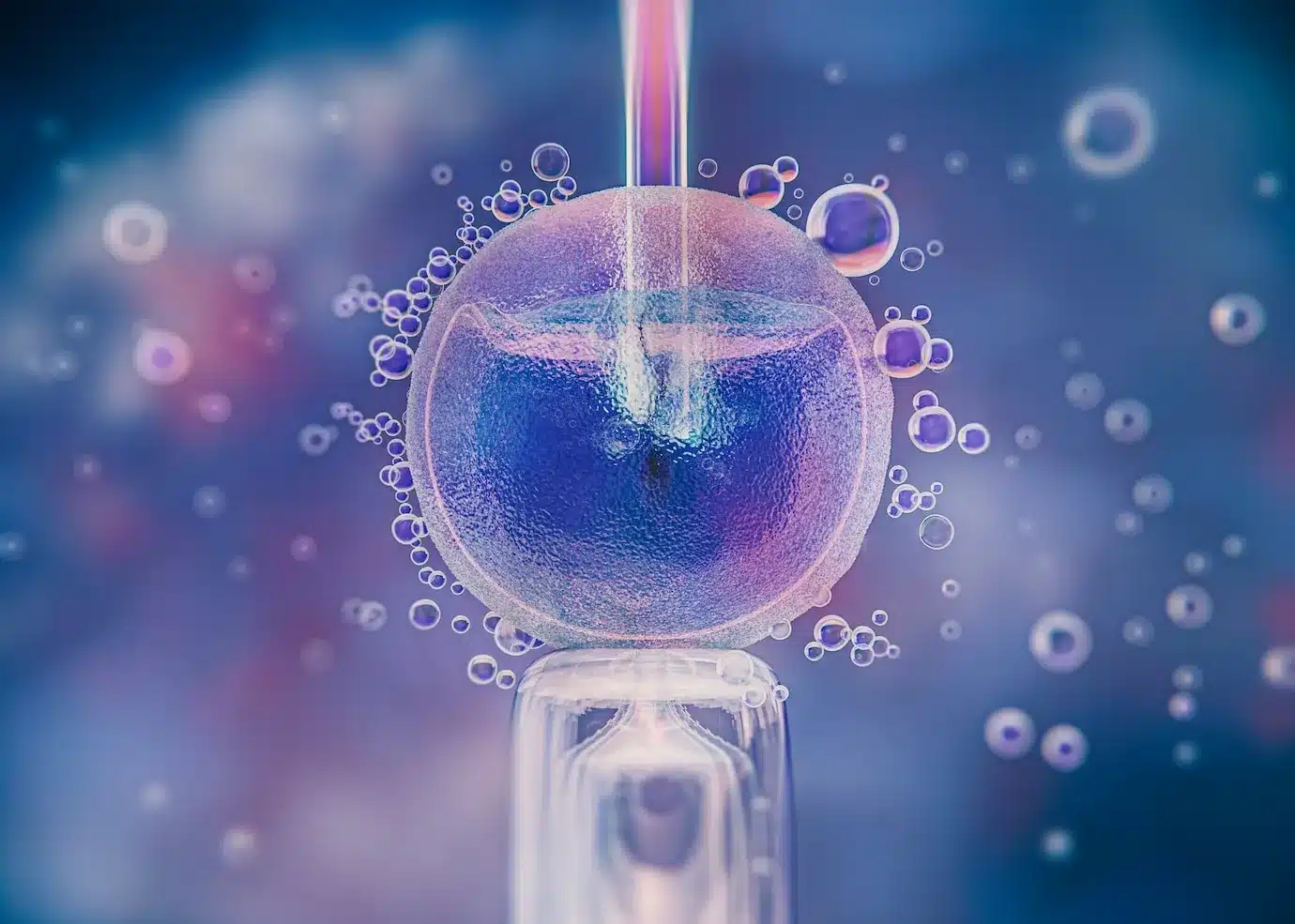In today’s fast-paced age of assisted reproductive technology (ART), Frozen Embryo Transfer (FET) has become one of the most advanced and popular fertility treatments. What was once a backup option to fresh embryo transfers, FET is now a first-line treatment with enhanced techniques and rising success rates. As a result of continuous technological advances, the future of fertility treatment has never looked better—and particularly for intended parents who seek safe, efficient, and personalized solutions.
Amongst these advancements, top experts at Indian Egg Donors are walking future parents through this new face of fertility solutions with professionalism and care. Their website brings intended parents in contact with access to frozen donor embryos and other state-of-the-art reproductive technology options through proper channels, like a certified frozen egg donor bank.
What is Frozen Embryo Transfer (FET)?
Frozen Embryo Transfer is thawing and transferring already frozen embryos in a subsequent menstrual cycle. The method provides patients greater flexibility, reduced risk of ovarian hyperstimulation syndrome (OHSS), and, in the overwhelming majority of instances, higher success rates compared to fresh embryo transfers.
Newer FET techniques, such as vitrification—a flash-freezing process that prevents ice crystallization—have greatly improved embryo survival rates. Today, over 95% of embryos survive thawing, and FET has become the foundation of IVF treatments worldwide. Patients who use frozen donor embryos in Canada now share in these advances and greater availability through established sites like Indian Egg Donors.
The Rise of FET: Why More Patients Are Choosing It
There are a few reasons why FET is the most favored treatment for fertility:
- Maximized Embryo Viability: New freezing and thawing techniques keep embryos uncontaminated so they are able to implant perfectly.
- Optimal Synchronization: The incidence of FET cycles can be well synchronized either when synchronized to the woman’s natural cycle or a hormone-stimulated cycle, leading to a better chance of implantation.
- Less Physical Stress: Because the embryos are frozen, patients are not required to go through stimulation and egg retrieval cycle after cycle, reducing physical and mental stress.
- Better Safety: Embryo freezing enables physicians to better monitor and regulate hormone levels, ridding the dangers such as OHSS.
But its success and stability have prompted such clinics as Indian Egg Donors to start FET more and more often, particularly to patients who are utilizing frozen donor embryos or initiating an egg donation cycle.
Technological Advancements Revolutionizing FET
There are many new technologies on the horizon that make the future of frozen embryo transfer sound promising:
1. Artificial Intelligence (AI) in Embryo Selection
AI-based tools have now been used to assess the quality of embryos with great accuracy. Thousands of time-lapse images are analyzed and expect which embryos have a higher chance of leading to pregnancy, thus removing the bias that is often yielded by humans and improving outcomes.
2. Non-Invasive Genetic Testing
Previously, PGT involved removing a few cells from the embryo, itself a risk. Today’s technologies enable non-invasive PGT, with genetic data drawn from the fluid that surrounds the embryo, without harming the embryo, and yet delivering vital health data.
3. Personalized Uterine Receptivity Testing
Being aware of when the uterus is most receptive to an embryo. New testing technologies, such as the ERA, enable fertility practitioners to more accurately identify the optimal time to implant. This results in the response rate being vastly improved.
4. Advances in Cryopreservation
New cryopreservation techniques are being developed continuously, such that embryos can now be safely stored for extended periods without the quality being lost. Embryos being frozen for over ten years and yet resulted in healthy pregnancies have been reported. The majority of these frozen embryos are being donated by a frozen egg donor bank, giving recipients increased flexibility.
At Indian Egg Donors, these technologies are incorporated into their fertility plans that ensure international accessibility, such as egg donation in Canada, whereby legal and medical regulations make many intended parents flock to them.
FET and Global Accessibility
Frozen embryo transfers aren’t just changing success rates-they’re making fertility treatment accessible. Since embryos can be stored and transported safely, patients can receive IVF treatment in one nation and finalize the embryo transfer in another. International access is particularly helpful for individuals and couples using an egg donor agency near me that has arrangements with Canadian fertility centers that have frozen donor embryos in Canada.
FET also welcomes LGBTQ+ couples, single mothers by choice, and individuals who suffer from medical conditions that make it impossible to have a natural cycle. For others, beginning an egg donation cycle with the help of a reputable egg donor agency near me gives them a better opportunity to create a family.
A Look Ahead: The Next Era of Fertility Treatment
In the future, experts envisage further convergence between big data, genetic testing, and personalized medicine to further improve fertility treatment. Patients will be able to look forward to personalized treatment plans based on their individual hormonal, genetic, and lifestyle factors.
There is also ongoing research into whether or not it would be possible to reprogram cells as a means of creating gametes (sperm or eggs), and thus further alter treatment for the infertile by age or disease. Global programs such as egg donation in Canada will also continue to make access and innovation a reality in this category.
With the progress of science and technology, service providers like Indian Egg Donors are leading the next page of the reproductive medicine book—offering hopeful parents not just treatment, but real chances at building a family.
Frequently Asked Questions
Q1. What is a Frozen Embryo Transfer (FET)?
Ans: Frozen Embryo Transfer is the thawing of a frozen embryo and transferring it into the uterus to facilitate pregnancy. Most patients utilize frozen donor embryos for this treatment as part of their fertility treatment.
Q2. Why is FET becoming more popular in fertility treatments?
Ans: FETs have improved success rates, improved timing, and less health risk than fresh transfers. This is particularly good for Canadian patients opting for frozen donor embryos in Canada due to its regulated and supportive fertility culture.
Q3. How long can frozen embryos be stored?
Ans: With contemporary freezing techniques, embryos can be stored for years without compromising quality. A donor facility for a frozen egg donor bank guarantees efficient preservation and the convenience of availability of donor embryos for future application.
Q4. What new technologies are improving FET success rates?
Ans: AI for embryo selection, non-surgical genetic testing, and personal uterine timing are the notable advancements. These technologies are usually combined throughout the period of an egg donation cycle in order to optimize implantation potential.
Q5. How do Indian Egg Donors support FET treatments?
Ans: Indian Egg Donors employs advanced technology and methods for enhancing FET results for individuals. They collaborate extensively with Canadian egg donation clinics and are a good egg donor agency near me for several intended parents.
Conclusion
Frozen Embryo Transfer is no longer second best—it’s the future of fertility care. Improved embryo freezing, artificial intelligence selection, and individualized uterine screening, all of which are available at FET, offer patients better success rates, increased safety, and greater convenience.
Due to such clinics as Indian Egg Donors, parenthood is finally a reality for greater numbers of people than ever before. Driven by technology, the fertility industry will be changing and will go on changing, and FET, backed by institutions such as frozen egg donor banks and frozen donor embryos programs, will certainly be at the forefront of this change.

Dr. Kulsoom Baloch
Dr. Kulsoom Baloch is a dedicated donor coordinator at Indian Egg Donors, leveraging her extensive background in medicine and public health. She holds an MBBS from Ziauddin University, Pakistan, and an MPH from Hofstra University, New York. With three years of clinical experience at prominent hospitals in Karachi, Pakistan, Dr. Baloch has honed her skills in patient care and medical research.










